Editorial
Mastered for PS3
February 29, 2012
Apple has just launched a new program titled 'Mastered for iTunes'. Existing tracks and albums are being remastered and tweaked to combat the effects of lossy compression with AAC. One of the artists whose back catalog is undergoing this treatment is Rush. Ars Technica has an excellent article on it here,

Now Sony has just relaunched its PlayStation Network (PSN) and rebranded it Sony Entertainment Network (SEN). The basic idea is to integrate the services for PS3, PSP and all other connected Sony A/V devices. Here you can download not only videogames but also music and movies.
This made us think: As opposed to iPods, PS3 doesn't quite need audio compression. Contrary, PS3 can handle audio DSD (the audio format used on SACD: uncompressed 1-bit 2.8 MHz audio -- 64 times the sampling frequency of Red Book CD) and PCM at 24-bit 176.4 kHz in up to 5.1 channels -- better resolution than many of the master recordings used for the iTunes remastering process.
Why doesn't Sony launch a program 'Mastered for PS3' with high-resolution and multichannel music downloads aimed at the 62-million strong PS3 user base? There are thousands of SACDs that could be reissued this way and it could pave the way for far more music to get mixed in high-quality surround sound. We're keeping our fingers crossed.
The Ideal PlayStation 3
November 18, 2009
The evolution of PlayStation 3 has seen two opposing trends: On the one hand, features have been removed in order to save cost. On the other hand, at the same time, the units have become more energy-efficient and, as a result, more quiet. Both developments are the effect of attempts to save cost, however obviously the processor shrinking has not been a simple cost-cutting measure but the result of (expensive) manufacturing technology progress.
Let us assume for a moment that money is no object. We'll get back later on whether it really is. What would the ideal PS3 look like? Without asking the impossible, let us dream for a minute and compose a console from different features and components that have at some point been used throughout the PS3's life span thus far and components that are simply available on the market.
|
 |
The drive would be SACD-compatible, first of all. |
|
PS2 compatibility would be provided; preferably through emulation in hardware. |
|
|
 |
The unit would have 4 USB ports as well as flash card readers. |
|
As opposed to these spec points, which are all found in 60GB units, the processors would be the smallest available i.e. 45nm process for the Cell, 65nm for the RSX. If we wait a little longer perhaps a 45nm RSX will be feasible too. This is important because smaller chips mean less power consumption and consequently less fan noise. Silent operation is key for use as an audiophile playback device. |
|
|
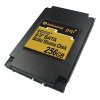 |
Instead of a Hard Disk Drive, the unit should have a Solid State Drive – no moving parts, so even less noise. 256GB is a nice round number and the current state of the art in SSD, and this would put it on par with or just above the current top-of-the-range PS3 Slim. |
|
To reduce the need for forced cooling even further, let's take a spacious cabinet. Not a regular PS3 cabinet (let alone a Slim one) or even that of Sony's regular Blu-ray Disc players – let's take an ES series cabinet. At 430x390x124 mm there's enough room for internal air circulation so the fan can be idle most if not all of the time. |
|
|
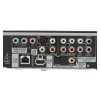 |
Should it have 7.1-channel analog outputs? No PS3 has them, and even Sony's latest reference SACD player - the SCD-XA5400ES - lacks them, instead providing stereo-only analog audio output and multichannel audio output via HDMI only. A nice-to-have, we reckon. It would accommodate people who balk at buying a new HDMI-equipped receiver but would they be a target group for this dream product? Unlikely. |
|
On HDMI, there would be a choice of DSD streaming output and conversion to high-resolution multichannel PCM. This will require a different HDMI chip than used in the original PlayStation3 or PS3 Slim, like the one used in the SCD-XA5400ES SACD player. |
|
|
 |
Should other features be added? An integrated tuner like the PlayTV peripheral would be nice but Japan, the US and Europe have very different TV standards, especially for digital TV. This would introduce costly diversity, which is very undesirable for a relatively low-volume product. |
|
Moreover, giving it TV recording capabilities would turn this device into a successor of PSX, sometimes referred to as PlayStation 2.5 because it was the launch vehicle for the XMB Cross Media Bar. Although PSX was priced very competitively compared to other Hard Disk/DVD Recorders of similar capacity, it was not successful. PS3 is versatile enough as it is, so let's not confuse the positioning any further. This positioning is also better served with an ES series design than with a quaint cabinet like the PSX's. |
|
|
The device we've just conceived will not be cheap. Is this a problem? No, because it could likely be sold with a profit. The Cell and RSX are a too expensive platform for entry-level dedicated BD players like the BDP-S360 but products like the BDP-S5500ES and the SCD-XA5400ES have a list price of $1,499.99 each (and a street price of $1,329 and $1,299, respectively). The two chips run an excellent version of the XMB graphical user interface and can perform powerful audio and video processing.

Long time ago there were rumors that Sony was planning to release a high-end AV version of PlayStation3. This is what it probably would have been like. Of course, it's not too late. PS3 is just getting into its prime.
One can anyway expect Sony to come with an SACD-compatible successor to the above ES series BD player (we suggest a BDP-SA5500ES) in order to compete with Oppo, Denon, Marantz and others. This next product will likely be announced at the 2010 CES, IFA or CEDIA.
The only really pricey component we've suggested is the SSD. A 600-GB model currently sells for about $600 making a set price like above unfeasible. But take a smaller capacity or a quiet HDD and you've still got a great product at a price that may be out of the league of the average gamer but is perfectly acceptable for audio/videophiles. Especially if the drive is as easily exchangeable as it is in PS3 it'll be a very attractive product.
Let's see what the future will bring.
Seven ways to reinvigorate SACD
March 22, 2008
Besides the obvious things Sony could do to further promote SACD such as releasing more titles, here are seven other suggestions for Sony to reinvigorate SACD.
- Release videogame music on multichannel SACD
The music that accompanied three of the ‘Wipeout’ games (the original, Wipeout 2097/XL and Wipeout Pure) was released on Audio CD. Currently, Sony Computer Entertainment is working on two new games in the series, this time for PS3. The first is Wipeout HD. The tracks (the music tracks -- not the racing tracks) have been mixed in 5.1-channel. Tip #1: release the soundtrack on SACD. Probably this suggestion is more for SCE than for Sony Music because some of the music CDs were released by other record labels.

- Bundle an SACD with PS3
There are various game bundles and there's been a movie bundle. Perhaps a specific audio bundle is far-fetched but why not bundle an SACD sampler disc with each SACD-compatible unit? This would certainly go a long way to raise awareness of the format among PS3 buyers which currently is surely well below 100%.
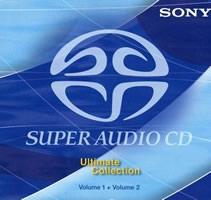
- Enable DSD output on PS3
There are various AV Receivers now that can handle DSD input via HDMI (including one from Sony: the STR-DA5300ES). Judging by many questions posted here and elsewhere on the internet, many audiophiles would love if they could choose whether to do DSD decoding in the PS3 or in their AV Receiver, like is possible with some SACD players.

- Make a dedicated PS3 Receiver
Possibly more of a suggestion for the Home A/V Divison than for SCE. There is probably a market opportunity for an AV Receiver designed specifically for PS3. It need not be a full-size, full-fledged AV Receiver – it could be compact like Denon's AVC-380. In fact, it could have the same look as the console. It should decode all the Blu-ray Disc and SACD audio formats such as Dolby TrueHD, DTS HD, multichannel PCM and maybe DSD (see suggestion #3). Instead of dozens of connections it would only have one input: an HDMI port to connect to a PS3 unit. Perhaps just a second one for a digital set-top box. Of course it will need to have a couple of outputs: for a TV screen (at least HDMI, perhaps some alternatives) and up to 7.1 speakers.
- Release an SACD-compatible BD player
Of course, we don't mean PS3 here. Instead, release an 'AV component type' BD player with the BD/DVD/SACD/CD drive from PS3 plus whatever other electronics are necessary for SACD playback. The ES series model (BDP-S2000 ES) and the HES-V1000 really ought to have had this.
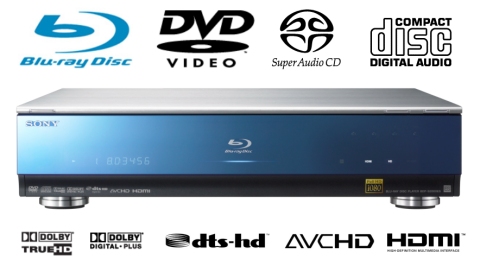
- Retain an SACD-compatible PS3 model at all times
When the successor to the 60 and 80-GB models comes out, let it be another model that retains the 'high-end spec', including SACD. In Sony's apparent strategy of constantly offering two PS3 SKUs to choose from this makes sense.
Especially the prospect of an SACD-compatible all-65nm PS3 with lower power consumption and consequently less fan noise sounds like a very tempting perspective to audiophile ears.
- Deploy DSD encoding software more widely
With a product like Sony's new USB-equipped PS-LX300USB record player, aimed at people who want to conserve their precious vinyl records, wouldn’t it make more sense to let them turn these into DSD disc rather than plain audio CDs? Bundle the SonicStage Mastering Studio suite that comes with high-end VAIO PCs instead of SoundForge Audio Studio Light Edition for creating CD-R/RW that's now included with this turntable.
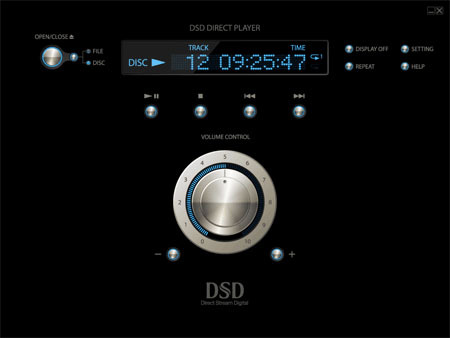
Another interesting promotion idea (for Sony Music, as well as other record companies) would have been to put stickers saying "PlayStation3-compatible" onto all SACD – just like like the "PlayStation2-compatible" sign that Sony Pictures printed on many DVDs a few years ago, and the "PlayStation3-compatible" mark on current Blu-ray Discs. Too bad this no longer makes much sense since the introduction of the 40GB unit without SACD support.
And then there are other possibilities that may not help SACD directly but that would stimulate the audiophile appeal of PS3 such as support for the lossless FLAC codec. And while you're at it, Sony, why not add OggVorbis, HD-AAC and MP3 Surround?

